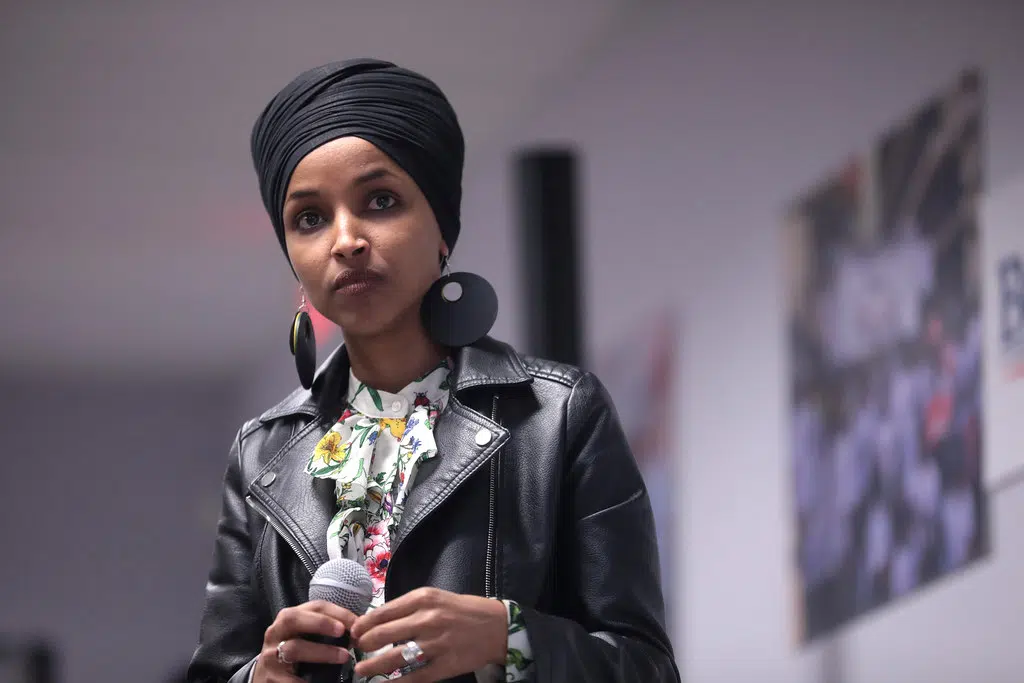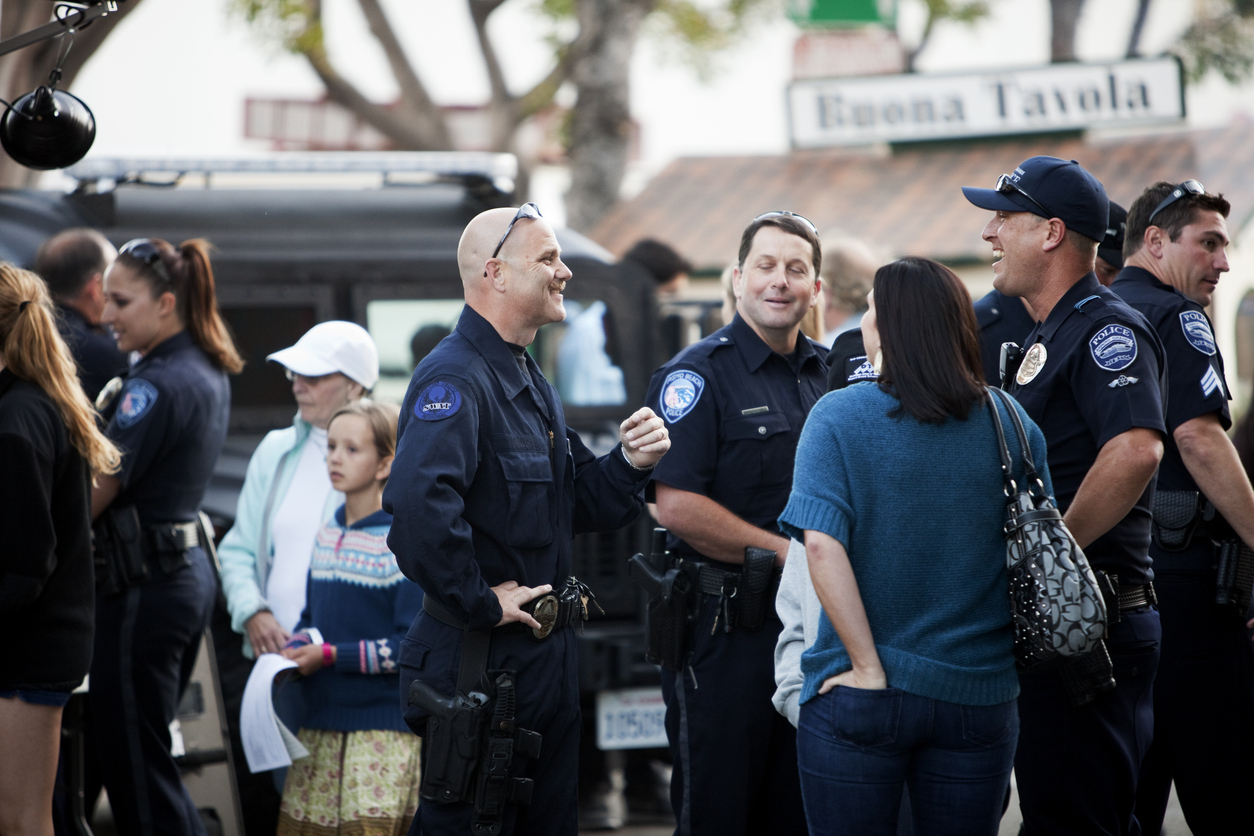How to Talk About: CRITICAL RACE THEORY & ANTI-RACISM

Six Key Points about Critical Race Theory
Download the PDF: How-To-Talk-About-Critical-Race-Theory-and-Anti-Racism_IWV
1. CRT is divisive. Critical Race Theory (“CRT”) prioritizes racial identity over our common American identity. CRT labels people, on the basis of skin color, as either victims or oppressors.
2. CRT disseminates despair. CRT teaches black Americans that the deck is stacked against them, that they lack agency in their own lives, and that black heroes and success stories are mere aberrations or tokens in a racist system.
3. CRT is unpatriotic. CRT teaches that our country was founded on white supremacy, that we have made little racial progress since our nation’s founding, and that, even in 2022, racism in America is the rule, rather than the exception.
4. CRT is systemic. Once confined to the ivory tower, CRT today infects almost all of our most basic institutions (including elementary schools, corporations, the military, and more).
5. “Anti-Racism” doesn’t mean “against racism.” Anti-Racism is a code word for CRT, which is so unpopular that its proponents are attempting to rebrand it as something that sounds compassionate.
6. E pluribus unum is unifying, uplifting, and patriotic. We must rededicate ourselves to our nation’s motto, “out of many, one.” Only by coming together as Americans can we truly win the fight against racism and prejudice.
Glossary of Terms
Critical Race Theory is a philosophical framework that starts from the premise that almost all of our current laws and institutions perpetuate white supremacy.
Anti-Racism is CRT rebranded. It does NOT refer to general efforts to combat prejudice, promote equal opportunity, or foster greater racial understanding. Popularized by Professor Ibram X. Kendi, Anti-Racism rejects race-neutrality, measures equality in terms of group outcomes (rather than equal opportunity), and calls for the creation of a government agency to ensure that all laws promote racial balance.
Equality refers to equal treatment and equal opportunity, irrespective of race.
Equity rejects the concept of equal opportunity and, instead, demands equal outcomes. An equity approach assumes that any statistical disparities among racial or ethnic groups are the result of discrimination.
Implicit Bias refers to unconscious feelings or assumptions. The concept is used to suggest that good intentions don’t matter. Even people who reject prejudice and strive to treat people fairly are motivated by bias.
Institutional Racism refers to the notion that racism is built into the way that companies, schools, government, and other institutions operate. Institutional racism is another way of saying “systemic racism.”
Systemic Racism is a term used to suggest that racism is woven into the fabric of America and that our institutions are rigged against people of color. According to this view, racism is everywhere, even when you can’t see it, and even when you cannot identify a particular discriminatory practice or person.
White Privilege refers to the idea that white people hold a privileged position in society, even when they lack education or economic power.
White Supremacy refers to a pernicious and discredited belief that white people are superior to people of other races. Unfortunately, many people today overuse the term “white supremacy” to suggest that even well-intentioned Americans are part of a cabal of Klansmen, determined to oppress people of color.
CRT in a Nutshell
- Critical Race Theory is not new. It has been around for decades as both an intellectual theory and a pedagogical practice.
- Critical Race Theory was developed in the 1980s and 1990s as an off-shoot of the Critical Legal Studies movement, which seeks to to deconstruct class power by demonstrating the ways in which American laws and institutions entrench income inequality.
- Critical Race Theory, pioneered by Professors Derrick Bell and Kimberlé Crenshaw (among others), adopts a similarly critical approach to analyzing American laws and institutions but substitutes race for class.
- Critical Race Theory rejects classically liberal notions of equal opportunity, free speech, and merit, arguing that race-neutral concepts such as these actually entrench white power.
- Because Critical Race Theory is an outgrowth of Critical Legal Studies, it is, perhaps, not surprising that some proponents of CRT claim that property is a “white construct” and that one cannot be truly Anti-Racist without being anti-capitalist.
- Critical Race Theory regards general social norms and cultural expectations as “white” and, therefore, discriminatory. CRT objects to the “normalization” of “white values” such as hard work, self-reliance, and being on time.
WATCH: WHAT IS CRITICAL RACE THEORY?
In Their Own Words
The very heartbeat of racism is denial. — Ibram X. Kendi
[CRT] questions the very foundations of the liberal order including equality theory, legal reasoning, Enlightenment rationalism, and neutral principles of constitutional law. — Richard Delgado & Jean Stefancic
[R]acism is ordinary, not aberrational. — Richard Delgado & Jean Stefancic
Progress in American race relations is largely a mirage. — Derrick Bell
The only remedy to racist discrimination is antiracist discrimination. The only remedy to past discrimination is present discrimination. The only remedy to present discrimination is future discrimination. — Ibram X. Kendi
The ideal of individual autonomy that underlies liberal humanism [is] a mechanism for keeping the marginalized in their place. — Özlem Sensoy & Robin DiAngelo
White identity is inherently racist; white people do not exist outside the system of white supremacy. — Robin DiAngelo
[B]elief in neutrality or merit…obscure[s] the ability to see racial power. — Kimberle Crenshaw
[Racism] lies at the very heart of American—and western—culture. — Angela Harris
What’s at Stake
ENLIGHTENMENT IDEALS
- Enlightenment ideals about mankind’s ability to reason and think critically revolutionized the world.
- The Enlightenment freed people from entrenched dogmas and gave birth to the scientific method.
- CRT rejects Enlightenment principles, claiming that the pursuit of truth is a biased endeavor and that reason and logic are racist.
- Under such an approach, the only thing that matters is power, in this case racial power.
OUR CONSTITUIONAL SYSTEM
- CRT prioritizes racial identity over individuality and over our common identity as Americans.
- CRT regards America’s constitutional structure as a mere smokescreen for racial oppression.
- Because CRT prioritizes power over reason, it does not tolerate free speech or other constitutional liberties.
AMERICAN EDUCATION
- In the name of “equity,” some schools have begun to offer opportunities or experiences only to students of certain races.
- Others have started eliminating opportunities (such as advanced or honors level courses) and indices of merit (such as class rank and Honor Roll).
- Many schools have adopted lessons on “white privilege” that encourage students to judge people on the basis of skin color, labeling them as either victims or oppressors.
OPTIMISM AND HOPE
- CRT regards progress in American race relations as a “mirage.”
- CRT teaches that racism never decreases, it merely shifts shapes or moves underground.
- CRT teaches people of color that the system is rigged against them, that they are unlikely to succeed, and that people of color who do succeed are tokens of a racist system.
Misperceptions v. Facts
MISPERCEPTION #1: CRT is a graduate level theory, confined to college philosophy departments and elite law schools.
FACTS:
- While it is true that CRT is an academic theory originally developed in elite law schools, today many primary and seondary schools implement the work of Critical Race theorists.
- They do this by dividing and judging people based on skin color and by teaching that American institutions are irredeemably racist.
MISPERCEPTION #2: CRT isn’t being taught in schools.
FACTS:
- It’s easy to say that CRT isn’t being taught because it is rarely, if ever, explicitly labeled as CRT.
- Many schools implement CRT principles as part of so-called “Anti-Racism,” “cultural competency,” or “equity and inclusion” initiatives.
- Sometimes policies and curricula based on CRT aren’t labeled at all. They are just seamlessly integrated into classroom policies and lesson plans.
- In fact, many teachers do not even realize that they are implementing CRT.
- The following are all examples of CRT being put into practice:
- Assignments that divide students by race or ask students to evaluate or rank their privilege;
- Assignments that presume, without debate, that American institutions reinforce and perpetuate white privilege;
- Lessons that teach students of color that the deck is stacked against them, that they lack agency to shape their own destinies, or that they are not safe around police officers;
- Lessons that teach white students that they were born racist;
- Policies that encourage teachers to adopt “color conscious” teaching methods that treat members of one racial group differently from members of other racial groups;
- Policies that punish protected speech or other lawful behavior because it may be perceived by a member of a particular racial group as a “microaggression.”
- These practices are being implemented locally with encouragement from the federal government. In fact, the Department of Education has proposed a rule prioritizing grants for projects that incorporate the teachings of Ibram X. Kendi and the now debunked 1619 Project.
MISPERCEPTION #3: Anti-Racist policies, training, and curricula promote the equal treatment of all Americans, irrespective of race.
FACTS:
- Anti-Racism does not refer to efforts to combat racism or prejudice. Anti-Racism is Critical Race Theory rebranded.
- Popularized by Professor Ibram X. Kendi, Anti-Racism takes as its starting point the idea that it is impossible for people, laws, policies, or practices to ever be race-neutral.
- Anti-Racism teaches the Orwellian notions that non-whites cannot be racist, that all whites are racist, and that denials of racism are, in fact, evidence of racism.
- Anti-Racist policies, training, and curricula often ask participants to acknowledge their racism and priviledge and to atone for it by advocating race-conscious remedies.
- Anti-Racism calls for the creation of a government agency to ensure that AntiRacist measures are built into all new laws and government regulations.
MISPERCEPTION #4: CRT and Anti-Racism are the natural continuation of the American Civil Rights movement.
FACTS:
- The American Civil Rights movement demanded equal treatment and equal opportunity, irrespective of race.
- By contrast, CRT and Anti-Racism argue that equal opportunity is itself discriminatory.
- Dr. Martin Luther King, Jr. understood that America is a nation conceived in liberty and argued that it was long past time for our country to live up to its founding promises.
- The American civil rights movement inspired patriotism by calling on Americans to re-dedicate themselves to the proposition, laid down in our Declaration of Independence, that “all men are created equal.”
- By contrast, Critical Race Theory and Anti-Racism teach that our nation was founded, not upon principles of liberty, but upon principles of oppression.
- CRT and Anti-Racism reject the goals and objectives of the American Civil Rights movement by rejecting the idea of equal treatment for individuals in favor of equal outcomes for groups.
- CRT and Anti-Racism reject the goals and objectives of the American Civil Rights movement by encouraging people to think of each other, not as individuals or as Americans, but as members of distinct racial categories.
MISPERCEPTION #5: Opponents of CRT want to prevent schools from teaching students about racism.
FACTS:
- The best way to teach students about racism in America is not by engaging in “privilege walks” or dividing students into oppressor and victim groups but by teaching history and discussing current events freely and openly.
- Schools should not sugar-coat American history. Students should learn about slavery, the Trail of Tears, Jim Crow, Japanese Internment, and the American Civil Rights movement (as well as the founding principles that inspired it).
- But schools should not propagandize the false notion that America and its institutions are inherently and irredeemably racist.
- Schools should emphasize the revolutionary nature of American ideals and the significant progress we have made in living up to those standards.
MISPERCEPTION #6: Opponents of Critical Race Theory want to prevent students from thinking critically about race.
FACTS:
- Ironically, Critical Race Theory opposes reason and logic, and thus rejects critical thinking about race. In fact, CRT requires adherence to racial dogma and tolerates no dissent.
- CRT does not ask students to consider where and why racism may still exist today. Rather, CRT instructs students that racism is systemic, lurking everywhere and in anyone who is not a person of color.
MISPERCEPTION #7: Bans on Critical Race Theory go too far.
FACTS:
- It is the role of the state board of education and local school committees to establish classroom curricula and to determine what is and isn’t taught in public schools.
- It is important to recognize that it is not “book banning” to select certain books over others as part of curriculum development. And public schools, in particular, are supposed to educate students consistent with the needs and desires of the public.
- Some attempts to stop the spread of CRT are targeted and effective, while others may not be.
- We do not support any policy that denies students the opportunity to discuss history or current events or to read works of literature by authors of color.
- We oppose efforts to prohibit students from reading, for example, The Confessions of Nat Turner, Ruby Bridges, or books about Martin Luther King and the March on Washington. These books and lessons are not examples of CRT. To the contrary, they are examples of the type of history and literature that should be taught in American schools.
MISPERCEPTION #8: Critical Race Theory bans violate the First Amendment.
FACTS:
- Teachers do not have a right to teach anything they please, and curricular choices are not protected by the First Amendment.
- The First Amendment protects citizens from government censorship. It doesn’t protect the government (i.e., public schools) from democratic accountability.
- Public school teachers are employees of the school district. When they are teaching, they are representing the district, not speaking as private citizens. Thus, classroom speech is “hired speech” and not constitutionally protected.
- As the Supreme Court held in Garcetti v. Ceballos, when public employees make statements pursuant to their jobs, the Constitution does not insulate them from employer discipline.
- It is a fundamental precept of First Amendment law that the government cannot compel an individual to speak. As such, schools cannot compel student speech. Lessons that force students to rank their privilege violate this basic principle.
MISPERCEPTION #9: “Equity” and “equal opportunity” are the same thing.
FACTS:
- “Equal opportunity” generally refers to a state of fairness in which the same rules and policies apply to everyone, irrespective of race or ethnicity.
- “Equity,” by contrast, refers to a state of equal results.
- Proponents of “equity” seek to “level the playing field,” either by applying standards differently on the basis of skin color or by abandoning the standards altogether.
- For example, in the school setting, proponents of equity often advocate lowering the standards for entry into honors or AP courses in order to diversify these classrooms.
- Alternatively, they may seek to eliminate advanced coursework altogether or to eliminate (or reduce the importance of) other educational practices that differentiate between students, such as standardized tests and class rankings.
- Because equity requires equal outcomes, it usually encourages a race to the bottom.
Questions & Answers
QUESTION 1: Why aren’t you an Anti-Racist? If you are not an Anti-Racist, aren’t you a racist?
ANSWER: No. Anti-Racism does not mean “against racism.” Anti-Racism refers to the belief that Americans are either victims or oppressors and that we can only fight discrimination with reverse discrimination. I support efforts to eliminate prejudice and racism that seek to bring us together as Americans. But I oppose divisive dogmas like Anti-Racism.
QUESTION 2: Why do you oppose CRT?
ANSWER: I don’t oppose teaching people about CRT, but I oppose the implementation of CRT, which seeks to deconstruct American institutions, demonize our country, and turn Americans of different backgrounds against one another.
QUESTION 3: Why are you trying to sugar-coat American history?
ANSWER: Opposition to CRT is not about ignoring history. History is one of our best teachers. Sadly, most schools don’t teach enough American history. Many skip significant parts of our civil rights heritage— including, believe it or not, the Civil War and Reconstruction! Often teachers revert to quick takes on what’s wrong with our country without placing current or historic problems in proper context.
QUESTION 4: Do you think white people are privileged?
ANSWER: Not everyone begins life with the same advantages, and some people have it harder than others. But the color of a person’s skin does not determine his or her lot in life. I reject the idea that people can be categorized as either oppressors or victims, depending on their skin color. I reject any ideology that teaches people to feel helpless in this land of opportunity. And I believe that all of us are privileged to live in the freest country on earth.
QUESTION 5: Is America an inherently racist country?
ANSWER: No. Like Dr. Martin Luther King, Jr., I understand that America is a nation conceived, not in racism, but in liberty. Unfortunately, we have not always lived up to our founding principles. But we have made incredible progress.
QUESTION 6: Why should we accept as legitimate a constitutional framework established by white males, some of whom were slaveholders?
ANSWER: America’s founders weren’t perfect, but they had the wisdom and the foresight to establish the framework for a truly free society—the freest the world has ever seen.
QUESTION 7: How can people of color succeed in a country where the rules are rigged against them?
ANSWER: In America, laws and other rules that classify people on the basis of race or ethnicity are illegal. America is not perfect, but this country offers social and economic mobility unlike any other country in the world. Life is not always easy, and racism and prejudice still exist. But Americans have the freedom opportunity to shape their own futures.
Ideas for Action
1. CONNECT WITH OTHER CONCERNED PARENTS
- Utilize this field guide from Parents Defending Education
2. JOIN A COMMUNITY
- Independent Women’s Network
- Foundation Against Intolerance and Racism
- Building Education For Students Together
3. FILE FOIA REQUESTS
4. KEEP RECORDS
- Keep copies of problematic assignments or school policies
- Keep copies of correspondence with school officials
5. CONTACT THE TEACHERS, PRINCIPAL AND/OR SUPERINTENDENT
6. ATTEND LOCAL SCHOOL BOARD MEETINGS
7. PROPOSE ALTERNATIVES
- 1776 Unites, the Woodson Center
- Hillsdale 1776
- Ten Principles for American Education
- FAIR Schools
- Moral Courage: Diversity Without Division
8. PUBLICIZE THE PROBLEM/WRITE LETTERS TO THE EDITOR
9. EXPOSE INAPPROPRIATE POLICIES AND ASSIGNMENTS
10. LEARN ABOUT STATE LEGISLATIVE INITIATIVES
11. RUN FOR SCHOOL BOARD
12. CHALLENGE THE LEGALITY OF POLICIES THAT SEPARATE STUDENTS ON THE BASIS OF RACE
Additional Reading
IWF Policy Focus: What Is Critical Race Theory?
by Inez Stepman
How to Be an Anti-Intellectual
by Coleman Hughes
The Dehumanizing Condescension of White Fragility
by John McWhorter
Critical Race Theory In Schools
by Glenn Loury and John McWhorter
Children’s Books: Too Much Too Soon
by Meghan Cox Gurdon
by Chris Rufo
Next Step for The Parent Movement: Curriculum Transparency
by Chris Rufo
It’s Not Racist to Oppose Critical Race Theory
by Charles Love
How Critical Race Theory Grew From Law School Thesis to K-12 Trend
by Kerry Murakami
What’s Wrong with Critical Race Theory?
by Daniel Subotink
Social Media Kit
Post the below messages, videos, and graphics to social media and make your voice heard.
Tag us so we can RT/Share your post:
- @IWV (Twitter)
- @IndependentWomensVoice (Facebook)
- @IndependentWomensVoice (Instagram)
Hashtags to include:
#EqualityNotEquity #EPluribusUnum
#HistoryNotDogma #OutOfManyOne
#CreatedEqual #UnityNotDivision
VIDEO:
VISUALS: Include these visuals with any Twitter, Facebook or Instagram posts. Download












